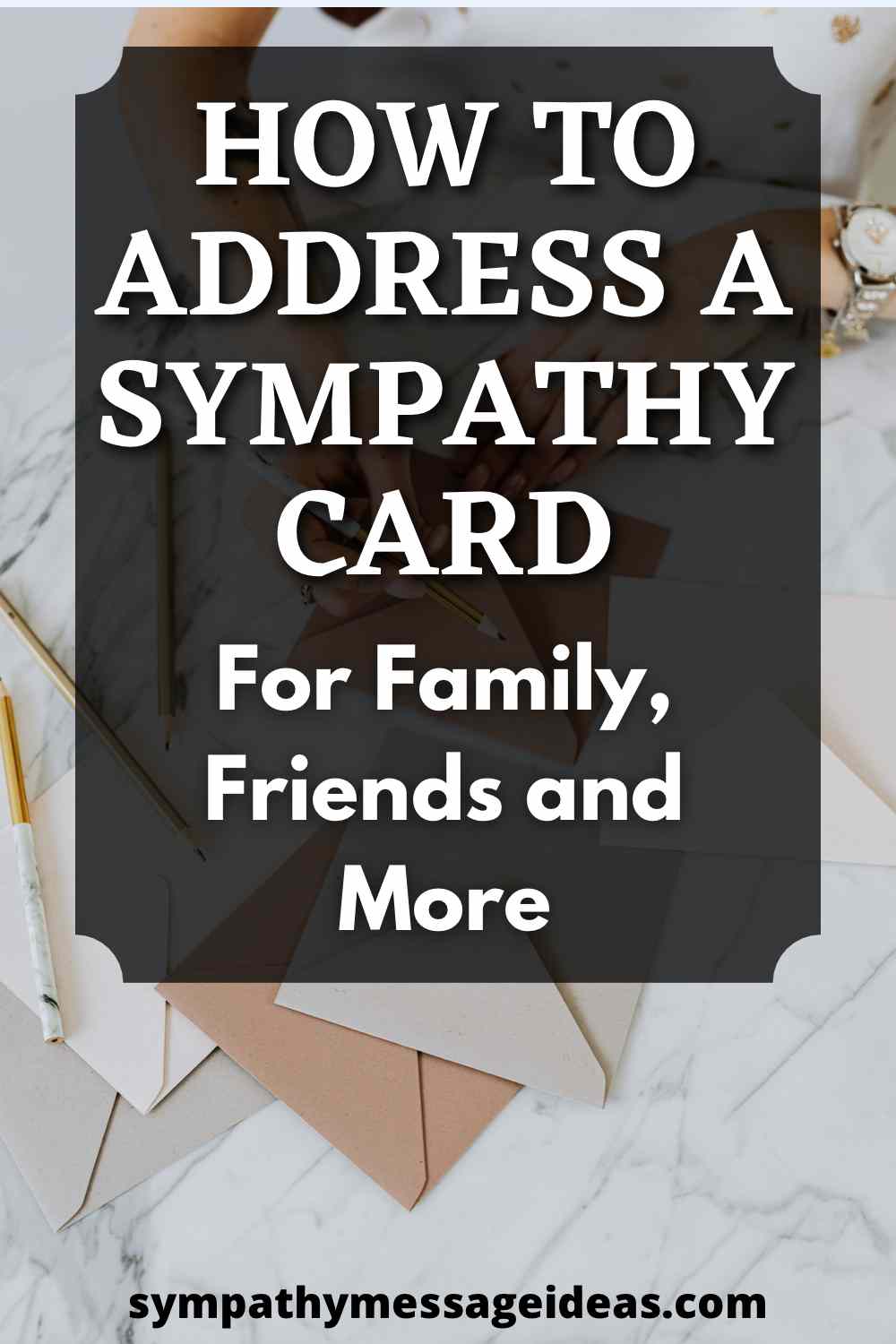When you send a sympathy card to someone who has suffered a loss you probably spend most of your time on the message. That makes sense – it’s the words of sympathy you choose that they will read and hopefully take comfort from.
But how you address a sympathy card is important too. Who the intended recipient of the card is, who the deceased was, and both their relationship to you and the receiver will make a difference to how you address your card. Also the type of language that you use – formal vs informal, for example – is influenced by the same things.
And that’s without even touching on some of the etiquette of sending a sympathy card. So there’s a little more to think about than just the name of who it’s going to.
So if you aren’t sure exactly how to address a sympathy card and need some help then follow this guide and the tips provided.
For some great choices of cards see the range of sympathy cards Amazon has.
How to Address a Sympathy Card
When sending a sympathy card the address is important. Depending on the recipient and how well you knew them you can follow these tips for addressing your card:
- The usual way to address your note is to the closest relative of the deceased. So that might be the widow or widower, or one of their children.
- Depending on how well you knew the deceased will also play a part in how you address your card. For example if you knew a relative of the the deceased well but not themselves then you would address it to that relative.
- When a friend has lost a loved one of relative then you write and address it to them.
- In most cases you can also put “and family” after whoever’s babe it is your addressing the card to. For example: “Mr David Jones and family”, or less formally “To David and family”.
How to Address a Sympathy Card Envelope
Addressing a sympathy card envelope is very similar to a regular letter. Write their address in the centre of the envelope the same way you usually would when sending a letter.
Remember to include your address on the envelope in the top left corner. This is allows them if they want to write back to you with a note of thanks. Also in case the letter is undelivered the postal service will be able to return it to you.
Example Address:
David Jones
2391 Patton Lane
Raleigh
North Carolina, NC
27601
Example of the start of your Letter:
“Dear David,
I’m deeply sorry to learn of your loss. Your father was a wonderful man who spread such happiness wherever he went. I feel lucky to have known him”
How to Address a Sympathy Card to a Family
If you decide to write to an entire family, rather than just one member you know well, then your message should speak to every family member. Don’t focus on
You should address the card to either the whole family or both of the couple at the head of the family. For example:
The Jones Family
1045 Rockford Mountain Lane
Des Moines
Iowa, IA
50393
Example of the start of your Letter:
“Dear Jones Family,
It is with sadness I send this letter after the passing of your beloved grandfather. He was a kind and generous man and I feel blessed to have spent so much time with him… ”
How to Address a Sympathy Card to a Widow
When addressing a widow it’s important to be mindful of their lost husband. You may gave us tally addresses a letter to them Mrs David Jones, which under the circumstances could cause extra pain as it would remind them of their lost partner.
It can be difficult to judge this perfectly but it’s probably best to try and use your own discretion. Each person will react differently to a loss so decide how to address their card on a case by case basis.
How to Address a Sympathy Card to a Married Couple
The usual way to address a sympathy card to a married couple is both names with the male first: eg Mr and Mrs Jones. However, there are some coupes who prefer to be addressed individually or where the wife hasn’t taken their partners name.
Example Address:
Mr and Mrs Jones
810 Cliffside Drive
Haltom City
Texas, TX
76117
Example of the start of your Letter:
“Dear David and Sarah,
I am very sorry to hear of your sons passing. He was a vibrant and amazing little boy and leaves behind such a huge hole in so many lives. I remember… ”
Do you Write ‘Dear’ or ‘to’ in a Sympathy Card?
The most usual way of staring a sympathy card is with “Dear”. “To” is also acceptable but a little less personal. “Dearest” is a good alternative and can be used without feeling like it is too informal. If none of those feel right then just beginning with the recipients name is also appropriate.
Don’t be too casual though, and bring formal is better than too informal when dealing with something as serious as a bereavement.
Sympathy Card Etiquette
For more help around the etiquette of sending a sympathy card we have some articles with tips and guides for different aspects of offering your condolences.



Hi Sally,
My dear friend just lost her husband. They have (had) different names with her name being that of her deceased 1st husband. We are sending a sympathy card but are unsure on how to address the envelope. If you would provide guidance I will greatly appreciate it.
Thank you!
Hi Butch,
I think it would be best to address your friend how you would normally and by the name she usually uses. In this case it would be her deceased 1st husbands name.
I can understand how that might seem a little strange considering her current husband has just passed away but I think in situations like this it’s easy to overthink things. If you would have addressed her by that name otherwise I think it makes sense to stick with it rather than do something different. I don’t foresee her taking offence or being upset even if she might have preferred something different, rather she will be touched by your card and reaching out to her.
All the best